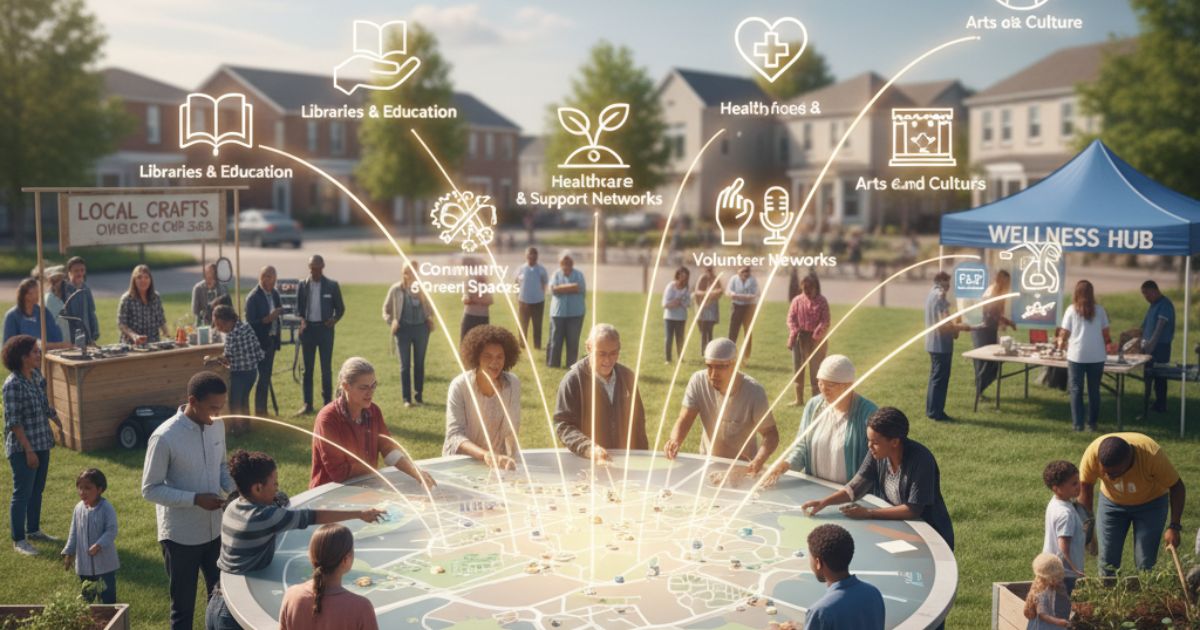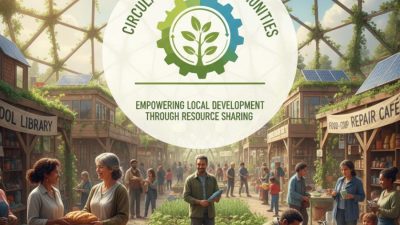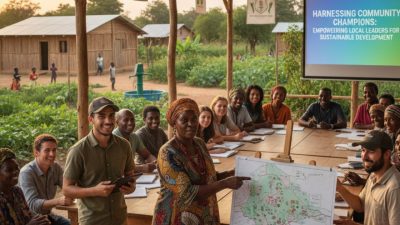Community asset mapping is a powerful way to explore the strengths of a neighborhood, town, or region. Instead of looking at problems or needs, it focuses on what already exists. These local resources can include schools, parks, libraries, small businesses, social networks, and cultural traditions. By mapping these assets, communities can see their strengths clearly. This approach helps residents work together, build strong connections, and plan for sustainable development. When done carefully, community asset mapping becomes a blueprint for long-term growth and positive change.
Why Community Asset Mapping Matters?
Traditional planning often focuses on problems—crime areas, empty buildings, or gaps in social services. While these needs assessments are useful, they can sometimes make communities feel dependent. Community asset mapping takes a different approach. It highlights local resources and neighborhood strengths, such as schools, parks, local businesses, social networks, and cultural traditions.
By identifying these assets, community leaders empower residents to take ownership of projects, collaborate, and innovate. This strengths-based approach boosts community morale and engagement. It also attracts partnerships, funding, and support that align with the positive story of local success. In short, asset mapping helps communities see what works and use it to grow sustainably.

Step 1: Engage and Mobilize Stakeholders
The first step in community asset mapping is assembling a diverse task force. Include long-time residents, business owners, nonprofit leaders, educators, faith-based organizations, and youth representatives. Hold a kickoff meeting or listening session to explain the process, set clear goals, and establish communication channels. Engagement at this stage builds trust and ensures broad perspectives are woven into the map.
Step 2: Define Asset Categories
Next, categorize community assets into manageable groups. Common categories include:
- Physical Assets: parks, libraries, clinics, community centers
- Economic Assets: local businesses, cooperatives, job-training programs
- Social Assets: clubs, faith communities, volunteer networks
- Cultural Assets: heritage sites, festivals, artists
- Skills and Knowledge: resident talents, tradespeople, educators
Clear categories help volunteers focus their research and ensure the final map represents the full spectrum of local strengths.
Step 3: Collect and Verify Information
Data collection can be both high-tech and high-touch. Use online surveys, mobile data-collection apps, and GIS tools alongside door-to-door interviews, focus groups, and community workshops. Encourage residents to submit photos, stories, or historical anecdotes that illustrate asset significance. Verification is vital: cross-reference inputs, confirm locations, and vet information with subject-matter experts to ensure accuracy.
Step 4: Visualize the Asset Map
With verified data in hand, create a visual map that’s both informative and accessible. Digital mapping platforms like ArcGIS Online, Google My Maps, or open-source QGIS enable layering of different asset categories, interactive pop-ups, and searchable features. If digital access is limited, develop large printed maps for town halls or community centers. Color-code categories and add icons or photos to bring the map to life.
Step 5: Activate and Sustain the Network
An asset map is only valuable if it informs action. Host a launch event to unveil the map and celebrate contributors. Form working groups around strategic priorities, such as safe routes to school, small business development, cultural heritage tourism, or youth engagement. Embed the map in local planning processes, grant applications, and community communications. Regular updates and annual reviews will keep the resource current and relevant.
Case Study: Maplewood Neighborhood Collective
In 2019, the Maplewood Neighborhood Collective faced declining youth engagement and underutilized public spaces. By implementing an asset-mapping process, neighbors identified a thriving skateboarding subculture, unused basketball courts, and local artisans willing to mentor youth. The resulting asset map guided the establishment of a skatepark-art mural project that doubled youth participation in community events and attracted city support for further park revitalizations.
Best Practices for Success

- Ensure Inclusivity: Reach out to underrepresented groups through targeted interviews and translation services.
- Leverage Technology: Use mobile apps for real-time data entry and QR codes on physical signage to link to digital assets.
- Foster Ownership: Train residents as citizen mappers who can update the map independently.
- Align with Policy: Integrate asset maps into comprehensive plans, zoning adjustments, and funding proposals.
- Measure Impact: Track improvements—economic indicators, event attendance, volunteer hours—to demonstrate value.
Overcoming Common Challenges
Resistance to change, data privacy concerns, and resource constraints can slow progress. Transparent communication, clear data-use agreements, and phased roll-outs help mitigate these obstacles. Partnering with local universities or tech hubs can help offset costs and provide access to technical expertise. Remember that the value of asset mapping is cumulative; early wins build momentum for more ambitious initiatives.
Conclusion: Building a Resilient Future
Community asset mapping turns ideas about potential into real, visible results. By identifying and using local resources—such as schools, parks, small businesses, social networks, and cultural traditions—neighborhoods can drive sustainable development that fits their unique context. Whether you are revitalizing a street, starting a community project, or boosting civic engagement through participatory budgeting, asset mapping provides a clear, step-by-step blueprint. Start mapping your community’s strengths today, and watch your collective vision come alive—both on the map and in everyday life.





